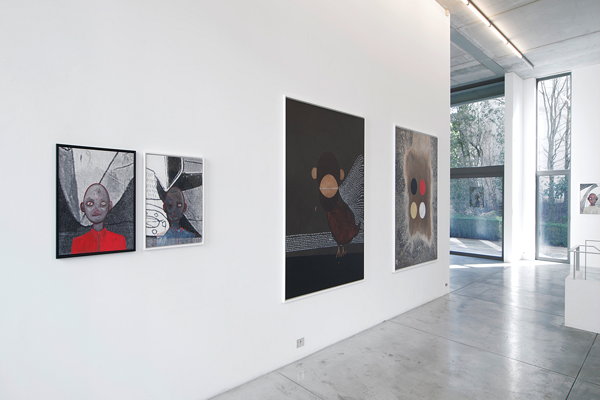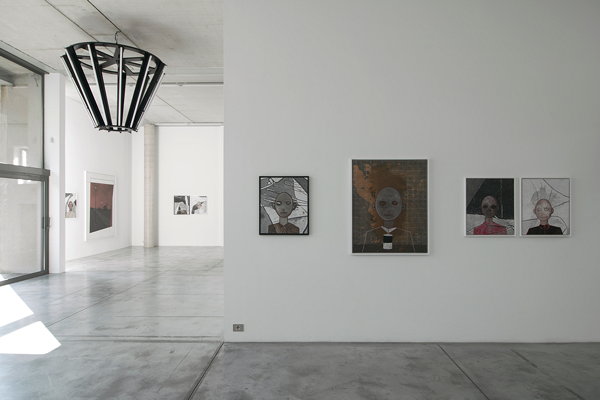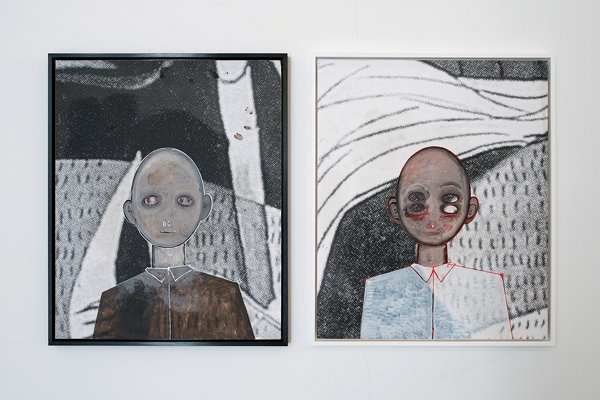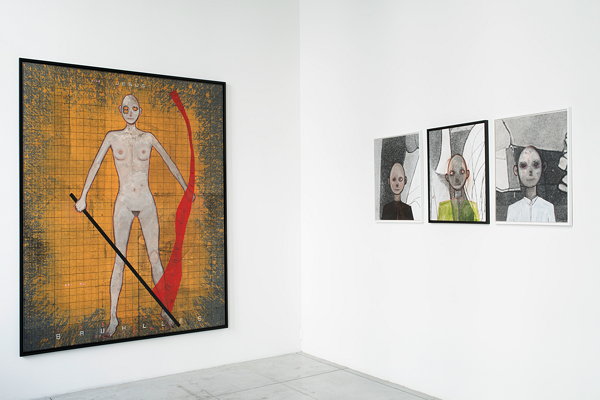
Thomas Zipp

Thomas Zipp

Thomas Zipp

Thomas Zipp

Thomas Zipp

Thomas Zipp

Thomas Zipp

Thomas Zipp
Thomas ZippAttempts to quantify sensation
|
Thomas Zipp
Thomas Zipp
Thomas Zipp
Thomas Zipp
Thomas Zipp
Thomas Zipp
Thomas Zipp
Thomas Zipp |
|
L'artiste complet qu'est Thomas Zipp ne cesse de nous étonner depuis plus d'une quinzaine d'années sur la grande scène internationale de l'art contemporain. Peintre, dessinateur, sculpteur, inventeur de machines singulières presque "surréalistes", sorties tout droit d'une anthologie immémoriale des créations les plus insolites, Thomas Zipp avait créé l'événement à Venise en 2013, au Palazzo Rossini avec son étonnante installation d'une clinique fictive intitulée : "Comparative Investigation about the Disposition of the Width of a Circle" (Enquête Comparative sur l'Utilisation de la Largeur d'un Cercle. Certains Éléments de cette installation seront montrés à La Centrale for contemporary art (Brussels) dans l'exposition Connected, que nous présentons du 24 mars au 28 août 2016, comme co-commissaire). Il faisait ainsi référence aux recherches de Charcot (qu'il a réalisé sur l'hystérie à La Salpétrière, à Paris) et à la chanson de Bowie (dans l'album The Man Who Sold The World, 1970) qui évoquait sa lutte contre les affres de la drogue et la figure du diable !
Aujourd'hui, cette nouvelle série de peintures présentée à Bruxelles renoue avec la figure, le portrait et les signes qui sont la marque de son style, en essayant de capter une certaine sensation. Le regard concentré de ses portraits fixe intensément le spectateur, les fonds du tableau sont tramés comme des pixels et de strates de chiffrement des messages informatiques codés. Il s'en dégage une atmosphère particulière par l'utilisation de couleurs irisées et moirées. La lumière est une autre préoccupation de l'artiste qui instaure un climax, lequel produit des impressions de mouvement. Dans la représentation de La Cène, le dernier banquet, inspiré de Leonard de Vinci, Thomas Zipp en donne une nouvelle vision et interprétation par les particularités propres à sa thématique. Cet ensemble évoque, comme il me l'a indiqué, les recherches de Karl Theodor Fechner sur la psychophysiologie (1860) où la relation entre l'aspect physique et les stimuli mentaux sur le sujet provoquent des changements de comportements, au niveau des visages des patients. Il y a dans ses compositions une évocation de l'apparition d'Ovnis vus à Bruxelles, en 1989. Un livre publié en 1991 relate ce fait divers des plus étranges ! L'artiste mêle ces différentes sources et éléments de son observation de la société et des constats psychologiques et comportementaux des hommes dans une époque donnée pour composer ses tableaux et ses images poétiques. La recherche scientifique et les interfaces entre les différents médiums participent constamment de son abondant corpus visuel. Il est vrai que, de "cette inquiétante étrangeté", nait une vision artistique originale et hors des courants actuels de l'art. Les propositions de Thomas Zipp apparaissent – au même titre que le fit un Picasso en revisitant toute l'histoire de l'art – comme une nouvelle subjectivité esthétique. Cette œuvre de Thomas Zipp apparaît telle une épiphanie au sens ou James Joyce l'entendait, c'est-à-dire comme un fragment ouvert de réalité restant énigmatique parce qu'il emprunte à plusieurs périodes et à plusieurs espaces à la fois sa puissance d'apparition. C'est l'impalpable sensation dont parlait Cézanne. Cette dimension se révèle dans toute l'œuvre de Thomas Zipp tel un flux permanent. |
As an all-round artist who has been active on the large international stage of contemporary art for the past 15-odd years, Thomas Zipp never fails to amaze us. Zipp paints, draws, sculpts and invents almost "surrealist" machines. Using the most unusual creations taken straight from an age-old anthology, he created an event held at the Venetian Palazzo Rossini in 2013 with the amazing installation of a fictitious clinic entitled: "Comparative Investigation about the Disposition of the Width of a Circle" (Comparative Investigation about the Disposition of the Width of a Circle. Certain Elements of this installation will be exhibited at La Centrale for contemporary art (Brussels) during the exposition Connected, which we will be organising as co-curators from 24 March to 28 August 2016). The work makes reference to both Charcot's research (on hysteria at the La Salpétrière hospital in Paris) and David Bowie's song (taken from the album The Man Who Sold The World, 1970), which deals with his fight against drug addiction and the devil!
This new collection of paintings is currently exhibited in Brussels and revives the figures, portraits and features that characterise Zipp's style, while at the same time attempting to capture a certain sensation. The look of concentration on the faces of his portraits really draws in the spectators and the background of the paintings forms a raster work that reminds us of pixels or the cryptographic layers of coded digital messages. From this a specific atmosphere emerges through the use of iridescent and shimmering colours. Another aspect of particular concern to the artist is light and he uses it to produce a climax, which gives the impression of movement. In his representation of The Last Supper, inspired by Leonardo da Vinci, Zipp offers an entirely new vision and interpretation of this classic work through the characteristics that are typical of his oeuvre. As indicated by the artist himself, this collection evokes the psychophysiological research conducted by Karl Theodor Fechner (1860), which explores the behavioural changes caused by the relationship between the physical aspect and mental stimuli of the subject, more specifically with regard to the patients' faces. His compositions furthermore recall the apparition of UFOs, spotted above Brussels in 1989. A book published in 1991 tells the story of this extremely strange news item! The artist combines these different sources with elements of his societal observations, and what he observes in the psychology and behaviour of people during a given era, to compose his paintings and poetic images. Scientific research and the interfaces between the different media provide a constant contribution to his extensive visual corpus. In actual fact "this unsettling strangeness" gives rise to an original artistic vision, which is very different to any of the contemporary art movements. Just like a Picasso reinterprets the entire history of art, Thomas Zipp's propositions emerge as a new aesthetic subjectivity. This particular work appears to be an epiphany in the way James Joyce understood it, meaning an open fragment of reality that will always remain mysterious, as it derives its power of being from several periods and several locations. It is the same intangible sensation Cézanne refers to. This dimension flows through Zipp's entire oeuvre like a permanent flux.
Patrick Amine
Bruxelles, avril 2016 |
|
Thomas Zipp, Attempts to quantify sensation
jusqu'au 16 avril Galerie Albert Baronian 2 rue Isidore Verheyden, 1050 Brussels www.albertbaronian.com |